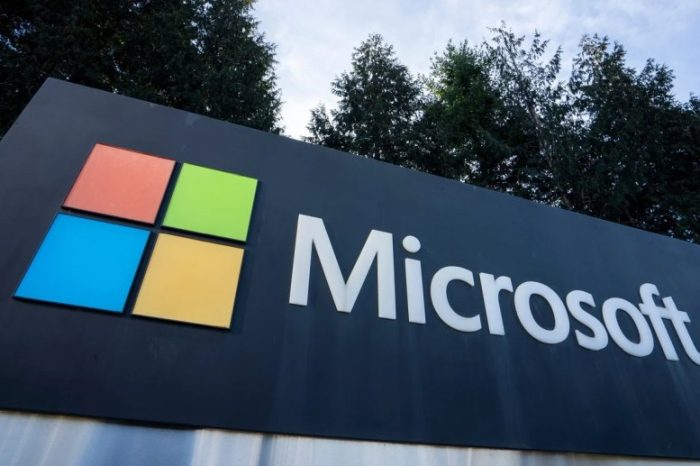What Is Performance Advertising: A Complete Guide for Modern Marketers

Introduction
In today’s results-driven digital landscape, advertisers are no longer satisfied with vague promises of “brand visibility.” They want measurable outcomes — clicks, leads, sales, and engagement. This demand for accountability gave rise to performance advertising, a marketing model where advertisers pay only for specific actions achieved.
From affiliate marketers to global brands, this model has transformed how campaigns are planned, executed, and optimized. Platforms like MGID, which specialize in native and performance-based advertising, have made it possible to combine creativity with measurable ROI — turning ad spend into data-backed growth.
Defining Performance Advertising
Performance advertising refers to online advertising campaigns where payment is based on the results achieved, rather than the exposure generated. Instead of paying for ad impressions or airtime, advertisers are charged when users take a desired action — for example:
- Clicking on an ad (CPC – cost per click)
- Completing a purchase (CPA – cost per acquisition)
- Installing an app (CPI – cost per install)
- Registering for a newsletter or demo (CPL – cost per lead)
This model gives advertisers greater control over their budgets and enables continuous optimization based on performance metrics.
In contrast to traditional advertising, which focuses on reach and awareness, performance advertising is entirely data-driven. Every action is tracked, attributed, and analyzed, ensuring marketing investments directly contribute to business objectives.
How Performance Advertising Works
At its core, performance advertising relies on three interconnected components:
- Advertiser Goals – The campaign begins with defining a specific objective (e.g., increase conversions by 20%).
- Ad Placement & Targeting – Ads are served to users most likely to convert, based on behavior, interests, or demographics.
- Real-Time Optimization – Data collected during the campaign enables marketers to adjust bids, creatives, and targeting in real time to maximize ROI.
Modern platforms such as MGID leverage AI-powered optimization to analyze audience behavior, detect fraudulent clicks, and enhance targeting precision. This ensures that advertisers spend efficiently while reaching genuine, high-quality audiences across premium publishers.
Popular Performance Advertising Models
Performance advertising encompasses several pricing and tracking models. Each one aligns with different marketing goals:
1. CPC (Cost Per Click)
Advertisers pay when users click on their ads. CPC campaigns are ideal for driving website traffic or landing page visits and are easy to monitor through click-through rates (CTR).
2. CPM (Cost Per Mille / Thousand Impressions)
Although often associated with brand awareness, CPM can also serve performance goals when combined with engagement tracking. It measures how many times an ad was viewed — useful for reach-focused campaigns.
3. CPA (Cost Per Action)
One of the most popular models, CPA ensures advertisers only pay when users complete a valuable action, such as making a purchase or signing up. This approach minimizes wasted spend and ties costs directly to outcomes.
4. CPL (Cost Per Lead)
CPL campaigns focus on generating leads — often through form submissions or newsletter sign-ups. These are particularly effective for SaaS, education, and B2B brands.
5. RevShare (Revenue Share)
Common in affiliate marketing, this model pays partners a percentage of the revenue generated from referred customers. It aligns incentives between advertisers and affiliates, promoting long-term cooperation.
Each model offers different levels of risk and reward. The key is to match the pricing model to your campaign goals and sales funnel stage.
The Role of Data in Performance Advertising
The success of performance advertising depends heavily on data analytics and tracking technology. Every click, conversion, and view provides actionable information. Using advanced attribution models, advertisers can trace which channels — such as social media, search, or native ads — drive the most valuable results.
Tools like pixels, UTM parameters, and postback tracking enable precise measurement and help eliminate guesswork. By connecting campaign data to analytics platforms, marketers can see which creatives, audiences, and placements perform best — and adjust accordingly.
This data-first approach empowers businesses to make strategic, evidence-based decisions and continually refine their advertising efficiency.
Benefits of Performance Advertising
Performance advertising continues to dominate digital marketing because it combines transparency, efficiency, and flexibility. Some of the most notable advantages include:
1. Measurable ROI
Every dollar spent is tied to a specific action or conversion. This level of transparency helps marketers justify budgets and forecast revenue with confidence.
2. Cost Efficiency
Because advertisers only pay for results, wasted ad spend is minimized. Campaigns can be paused, scaled, or optimized in real time to achieve the best cost per result.
3. Scalability
Once a campaign proves profitable, it can be scaled across multiple channels or geographies. Platforms like MGID make this process seamless by offering global reach and a variety of native ad formats.
4. Audience Targeting Precision
Performance platforms use machine learning and behavioral data to target audiences based on interests, intent, or location — ensuring ads reach the most relevant users.
5. Continuous Optimization
Performance advertising is not static. Real-time feedback loops enable constant refinement, improving creatives, bids, and placements to increase conversion rates over time.
Performance Advertising Channels
Performance marketing spans across multiple digital environments. The most common include:
- Native Advertising: Blends seamlessly with website content, enhancing engagement without disrupting user experience. MGID specializes in this format, offering scalable, data-driven native campaigns.
- Search Advertising: Based on keyword intent, search ads reach users actively seeking products or information.
- Social Media Advertising: Platforms like Meta and TikTok allow for detailed audience segmentation and tracking.
- Affiliate Marketing: Partners promote offers and earn commission per action or sale.
- Display & Programmatic Advertising: Automated bidding systems deliver ads across vast publisher networks.
A balanced performance strategy often involves several of these channels working together through cross-channel attribution and unified reporting.
Challenges in Performance Advertising
While highly efficient, performance advertising isn’t without its challenges.
- Attribution Complexity:
Determining which touchpoint deserves credit for a conversion can be difficult, especially in multi-channel environments. - Ad Fraud and Bot Traffic:
Invalid clicks or fake impressions can distort data and waste budgets. Trusted platforms like MGID implement anti-fraud verification systems to protect advertisers and maintain transparency. - Creative Fatigue:
Overexposure to the same ads can reduce effectiveness. Continuous testing of visuals, headlines, and messaging is crucial. - Privacy Regulations:
With increasing restrictions on third-party cookies and data collection, marketers must rely on contextual targeting and first-party data strategies to maintain accuracy without violating privacy rules.
By acknowledging these challenges, advertisers can adopt smarter technologies and ethical data practices to ensure sustainable performance.
How Platforms Like MGID Support Performance Advertising
The performance model thrives on precision, scale, and transparency — areas where technology-driven platforms make a difference.
MGID, a global native advertising platform, empowers marketers with tools that combine reach and measurable performance. Through AI-driven optimization, real-time analytics, and transparent traffic sources, MGID enables advertisers to:
- Launch campaigns using flexible models (CPC, CPM, CPA).
- Access premium publishers across multiple verticals.
- Monitor brand safety and traffic quality.
- Analyze campaign results beyond conversions, including engagement depth and audience behavior.
This approach bridges the gap between awareness and measurable action — helping advertisers achieve results that align with both branding and performance goals.
Conclusion
Performance advertising represents the evolution of digital marketing toward full accountability. It’s not about assumptions or impressions — it’s about outcomes.
By combining precise targeting, real-time data, and cost-per-action models, advertisers can ensure that every campaign contributes directly to measurable business growth.
As competition intensifies and marketing budgets become more scrutinized, the ability to link spend to performance will continue to define success. With platforms like MGID, marketers can confidently navigate this landscape — creating campaigns that not only reach audiences but drive results.




